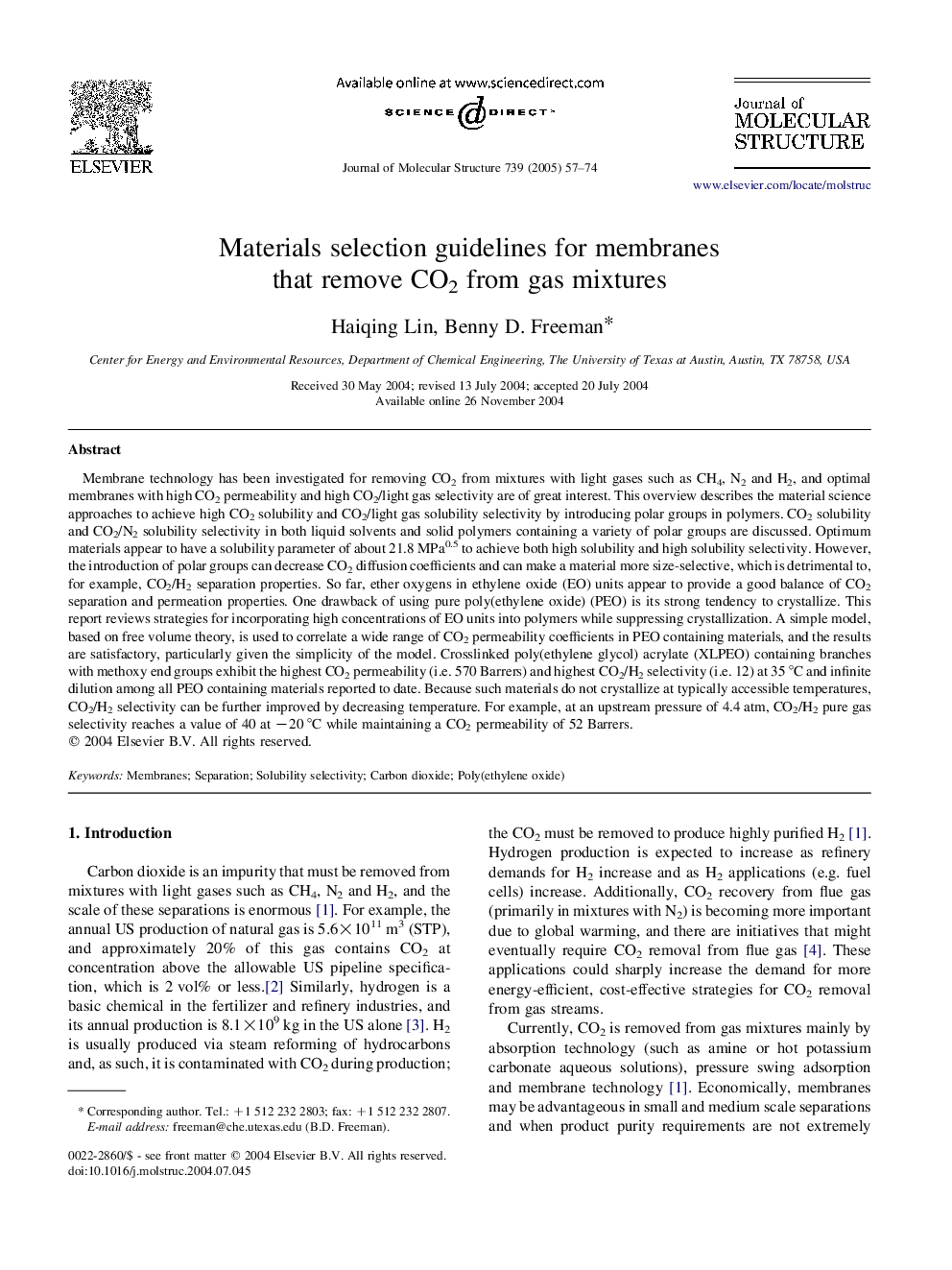| Article ID | Journal | Published Year | Pages | File Type |
|---|---|---|---|---|
| 9770282 | Journal of Molecular Structure | 2005 | 18 Pages |
Abstract
Membrane technology has been investigated for removing CO2 from mixtures with light gases such as CH4, N2 and H2, and optimal membranes with high CO2 permeability and high CO2/light gas selectivity are of great interest. This overview describes the material science approaches to achieve high CO2 solubility and CO2/light gas solubility selectivity by introducing polar groups in polymers. CO2 solubility and CO2/N2 solubility selectivity in both liquid solvents and solid polymers containing a variety of polar groups are discussed. Optimum materials appear to have a solubility parameter of about 21.8 MPa0.5 to achieve both high solubility and high solubility selectivity. However, the introduction of polar groups can decrease CO2 diffusion coefficients and can make a material more size-selective, which is detrimental to, for example, CO2/H2 separation properties. So far, ether oxygens in ethylene oxide (EO) units appear to provide a good balance of CO2 separation and permeation properties. One drawback of using pure poly(ethylene oxide) (PEO) is its strong tendency to crystallize. This report reviews strategies for incorporating high concentrations of EO units into polymers while suppressing crystallization. A simple model, based on free volume theory, is used to correlate a wide range of CO2 permeability coefficients in PEO containing materials, and the results are satisfactory, particularly given the simplicity of the model. Crosslinked poly(ethylene glycol) acrylate (XLPEO) containing branches with methoxy end groups exhibit the highest CO2 permeability (i.e. 570 Barrers) and highest CO2/H2 selectivity (i.e. 12) at 35 °C and infinite dilution among all PEO containing materials reported to date. Because such materials do not crystallize at typically accessible temperatures, CO2/H2 selectivity can be further improved by decreasing temperature. For example, at an upstream pressure of 4.4 atm, CO2/H2 pure gas selectivity reaches a value of 40 at â20 °C while maintaining a CO2 permeability of 52 Barrers.
Related Topics
Physical Sciences and Engineering
Chemistry
Organic Chemistry
Authors
Haiqing Lin, Benny D. Freeman,
